Embark on a captivating journey through Attingham Park, an architectural marvel that stands as a testament to centuries of history, artistic brilliance, and cultural significance. From its grand interiors to its sprawling gardens, Attingham Park invites visitors to immerse themselves in a world of elegance, artistry, and timeless beauty.
With its Palladian architecture and meticulously manicured landscapes, Attingham Park embodies the essence of English country estates. Step inside its opulent state rooms adorned with exquisite furniture, artwork, and decorative elements that tell the story of its illustrious past.
Historical Background of Attingham Park
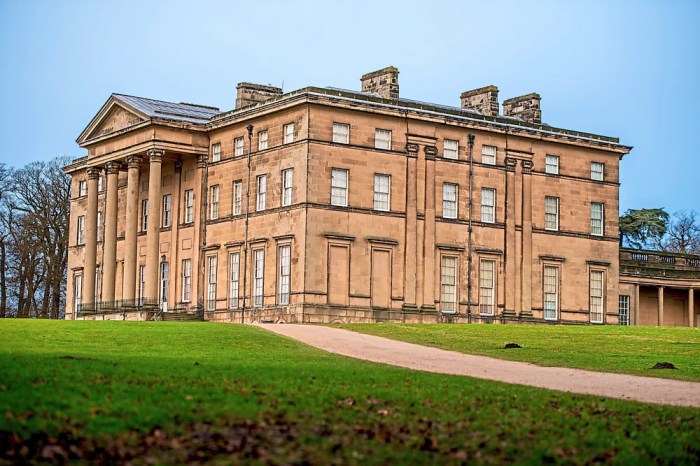
Attingham Park is a grand Palladian mansion and estate in the parish of Atcham, Shropshire, England, four miles southwest of Shrewsbury. The house was built in the 18th century for Noel Hill, 1st Baron Berwick, and was designed by George Steuart. It was later inherited by his grandson, Noel Hill, 2nd Baron Berwick, who commissioned Robert Adam to make extensive alterations to the house and gardens.
The estate was originally owned by the Vernon family, who had acquired it in the 14th century. The Vernons built a moated manor house on the site, which was later replaced by a Tudor mansion. In the 17th century, the estate passed to the Hill family, who had made their fortune in the iron trade. Noel Hill, 1st Baron Berwick, was a prominent Whig politician and served as Chancellor of the Exchequer under George III. He was also a patron of the arts and commissioned many works of art for Attingham Park, including paintings by Joshua Reynolds and Thomas Gainsborough.
Architectural Evolution of the Mansion
The original mansion was built in the 17th century and was a typical Tudor manor house. It was later remodeled in the Palladian style by George Steuart in the 18th century. Steuart’s design was based on the Villa Rotonda in Vicenza, Italy, and featured a symmetrical facade with a central portico supported by Ionic columns. Robert Adam’s alterations to the house in the late 18th century included the addition of a new wing, the remodeling of the interior, and the creation of new gardens.
The gardens at Attingham Park were originally laid out in the formal French style. In the 18th century, they were redesigned by Capability Brown in the more naturalistic English style. Brown’s design included the creation of a serpentine lake, which is a prominent feature of the landscape today.
Architectural Significance of Attingham Park
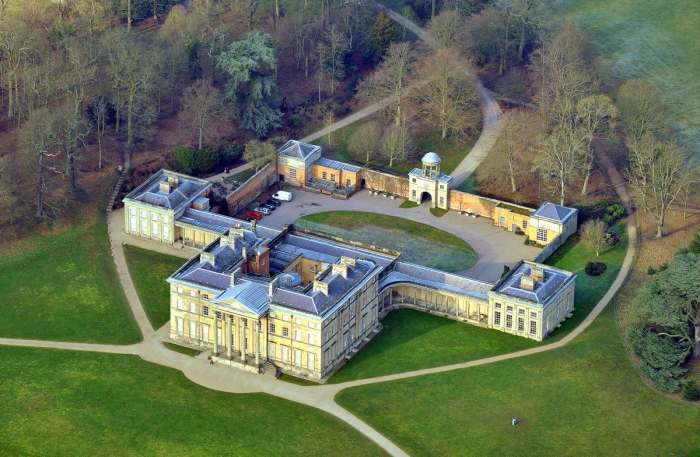
Attingham Park stands as a testament to the architectural ingenuity of its time, showcasing a harmonious blend of Palladian and Neoclassical styles. Its design principles and influences draw inspiration from the works of renowned architects like James Gibbs and William Kent, resulting in a masterpiece of architectural grandeur.
Attingham Park, with its stunning landscapes and historical significance, offers a captivating experience. If you’re looking for another enchanting outdoor destination, consider antelope island state park , where vast prairies, herds of bison, and serene lakes await exploration. While Attingham Park immerses you in the grandeur of the past, antelope island state park invites you to embrace the wonders of the present.
Return to Attingham Park, refreshed and inspired by the adventures you’ve encountered along the way.
Key Characteristics of Attingham Park’s Architectural Style
- Symmetrical facade with a central pediment supported by colossal Corinthian columns
- Balanced wings extending from the main block, creating a sense of harmony and proportion
- Large windows and doors that flood the interiors with natural light, enhancing the spaciousness and grandeur of the rooms
- Ornate plasterwork and elaborate carvings that adorn the ceilings, walls, and fireplaces, adding an element of sophistication and artistry
- Extensive use of marble and stone in the construction, lending an air of opulence and durability to the structure
Contributions of Renowned Architects and Craftsmen
The creation of Attingham Park was a collaborative effort involving several renowned architects and craftsmen, each contributing their expertise to the project.
- George Steuart: The initial architect responsible for designing the main block of the house, which was later expanded by other architects.
- James Gibbs: A prominent architect of the Palladian style, who provided designs for the facade and the interiors of the house.
- William Kent: A renowned interior designer, who contributed to the decoration and furnishing of the interiors, bringing his signature blend of classical and rococo elements.
- John Caroe: A 19th-century architect who oversaw the restoration and expansion of the house, adding elements of the Gothic Revival style.
Interior Design and Furnishings
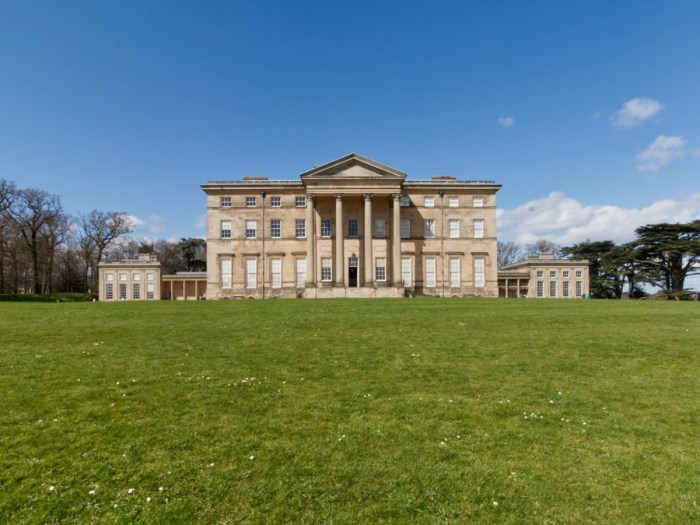
Attingham Park boasts an array of grand interiors, each adorned with exquisite furniture, artwork, and decorative elements. These spaces reflect the refined tastes of the Berwick family and their dedication to collecting and preserving fine art.
The state rooms, designed for entertaining and impressing guests, are particularly impressive. The Long Gallery, over 100 feet in length, features a remarkable collection of portraits and landscapes by renowned artists. The Saloon, with its opulent plasterwork ceiling and carved marble fireplace, showcases the finest examples of 18th-century furniture.
Reception Areas
The reception areas, such as the Entrance Hall and the Ante Room, are equally impressive. The Entrance Hall features a grand staircase adorned with elaborate wrought-iron railings. The Ante Room, with its painted ceiling and elegant furnishings, serves as a transition space between the public and private areas of the house.
Private Apartments
The private apartments, located on the upper floors, offer a glimpse into the domestic life of the Berwick family. The bedrooms are furnished with comfortable beds, dressing tables, and writing desks. The family’s interests are evident in the collection of books, prints, and other personal items displayed throughout these rooms.
The collection of furniture and artwork at Attingham Park is of great historical significance. Many of the pieces were acquired by the Berwicks during their travels throughout Europe, and they reflect the family’s eclectic tastes and appreciation for different artistic styles. The collection includes works by some of the most celebrated artists of the 18th and 19th centuries, including Thomas Gainsborough, Joshua Reynolds, and John Constable.
Gardens and Landscape
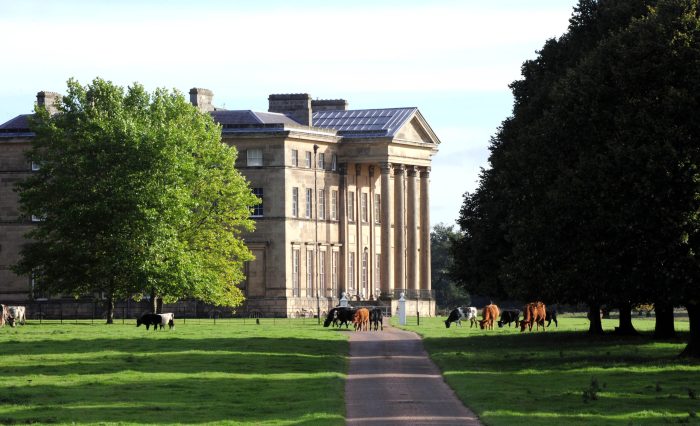
Attingham Park boasts extensive gardens and parkland that have been meticulously designed and landscaped over centuries. The gardens, which encompass formal gardens, pleasure grounds, and woodland walks, complement the architectural grandeur of the mansion and provide a serene and picturesque setting.
Formal Gardens
The formal gardens, located adjacent to the south front of the house, are characterized by their geometric layout and symmetrical design. The gardens feature manicured lawns, colorful flower beds, and topiary sculptures. The central axis of the gardens is marked by a grand fountain, which adds a touch of elegance and tranquility to the space.
Pleasure Grounds, Attingham park
The pleasure grounds, which extend to the east and west of the formal gardens, offer a more relaxed and informal setting. The grounds feature winding paths that lead through picturesque landscapes, including rolling hills, mature trees, and sparkling lakes. Visitors can enjoy leisurely walks, picnics, or simply relax amidst the natural beauty of the surroundings.
Woodland Walks
The woodland walks, which encompass the northern and eastern boundaries of the parkland, provide a tranquil escape into nature. The walks meander through ancient woodland, offering glimpses of wildlife and stunning views of the surrounding countryside. Visitors can choose from a variety of trails, each with its own unique character and charm.
The grandeur of Attingham Park transports visitors to a bygone era of opulence and artistry. While exploring its stunning interiors and picturesque gardens, consider venturing to the renowned aquarium boston for an immersive underwater adventure. Its diverse marine life, from graceful sharks to vibrant coral reefs, offers a fascinating glimpse into the wonders of the deep sea.
Upon your return, Attingham Park’s tranquil ambiance and historical charm will welcome you back with open arms.
Horticultural Significance
The gardens and parkland at Attingham Park are not only visually stunning but also horticulturally significant. The gardens feature a wide variety of plants and trees, including rare and exotic species. The parkland is home to a number of ancient trees, some of which are hundreds of years old. The gardens and parkland are managed with great care and attention to detail, ensuring that their beauty and horticultural value are preserved for future generations.
Attingham Park as a Cultural Hub
Attingham Park is not only a historical gem but also a vibrant cultural hub that hosts a wide range of events, exhibitions, and educational programs. It plays a significant role in promoting art, history, and heritage within the community.
Attingham Park is an 18th-century country house and estate in Shropshire, England. It is a popular tourist destination, and it offers a variety of activities for families, including guided tours, children’s trails, and a play area. If you’re looking for a budget-friendly family vacation, Attingham Park is a great option.
With its affordable admission prices and family-friendly activities, it’s a great way to spend a day out with the kids without breaking the bank. For more ideas on budget family vacations, check out our article here. Attingham Park is a great place to visit for families of all ages, and it’s sure to provide a fun and educational day out.
The park hosts regular exhibitions showcasing various aspects of its history, architecture, and collections. These exhibitions often feature artifacts, documents, and artwork that provide insights into the lives of the families who lived at Attingham and the social and cultural context of the time.
Cultural Events and Exhibitions
Attingham Park hosts a variety of cultural events throughout the year, including concerts, plays, and dance performances. These events take place in the park’s stunning surroundings, creating a unique and memorable experience for visitors.
- Summer Concerts: The park hosts a series of outdoor concerts during the summer months, featuring a diverse range of musical genres.
- Open-Air Theater: Attingham Park collaborates with local theater companies to present open-air performances of classic and contemporary plays.
- Dance Performances: The park hosts dance performances by professional companies, showcasing a variety of dance styles.
Educational Programs and Workshops
Attingham Park offers a range of educational programs and workshops for all ages. These programs aim to engage visitors with the park’s history, architecture, and collections.
- Guided Tours: The park offers guided tours led by knowledgeable docents who provide insights into the history and significance of Attingham Park.
- Workshops and Activities: Attingham Park hosts workshops and activities for children and adults, such as craft workshops, history talks, and guided walks.
- School Visits: The park welcomes school groups and offers educational programs tailored to different age groups and curriculum requirements.
Promoting Art, History, and Heritage
Attingham Park plays a vital role in promoting art, history, and heritage within the community. Through its exhibitions, events, and educational programs, the park provides opportunities for visitors to engage with and appreciate the rich cultural legacy of the region.
The park’s commitment to preserving and interpreting its history makes it an invaluable resource for researchers, historians, and anyone interested in understanding the past. Attingham Park’s cultural offerings contribute to the vibrancy and cultural richness of the region.
Tourism and Visitor Information

Attingham Park welcomes visitors from far and wide to explore its architectural beauty, immerse themselves in its rich history, and enjoy its picturesque surroundings. Whether you’re an art enthusiast, a nature lover, or simply seeking a day out in a stunning setting, Attingham Park has something to offer.
Admission and Opening Hours
Admission fees and opening hours vary depending on the time of year and the type of visit. Here’s a general overview:
| Peak Season (April – October) | Off-Season (November – March) | |
|---|---|---|
| Adult Admission | £13.50 | £11.50 |
| Child Admission (5-15 years) | £6.75 | £5.75 |
| Family Admission (2 adults + 2 children) | £33.75 | £28.75 |
| Opening Hours | Daily, 10am – 5pm | Daily, 10am – 4pm |
Guided Tours
Guided tours are available for an additional fee and offer a deeper insight into the history and significance of Attingham Park. Tours typically last for around 1 hour and are led by knowledgeable guides.
Facilities
Attingham Park offers a range of facilities for visitors, including:
- Free parking
- Restaurant and café
- Gift shop
- Picnic areas
- Accessible facilities
Suggested Itineraries
Here are some suggested itineraries for exploring Attingham Park and its surroundings:
- Morning Visit: Arrive at Attingham Park for opening time and take a guided tour of the mansion. Afterwards, explore the gardens and enjoy lunch in the restaurant.
- Full Day Out: Spend the morning exploring the mansion and gardens, then have lunch at the café. In the afternoon, take a walk or bike ride through the surrounding parkland and visit the village of Atcham.
- Weekend Getaway: Stay overnight in one of the nearby villages or towns and spend two days exploring Attingham Park and its surroundings. Visit the mansion, gardens, and parkland, and take advantage of the many walking and cycling trails in the area.
Final Wrap-Up: Attingham Park
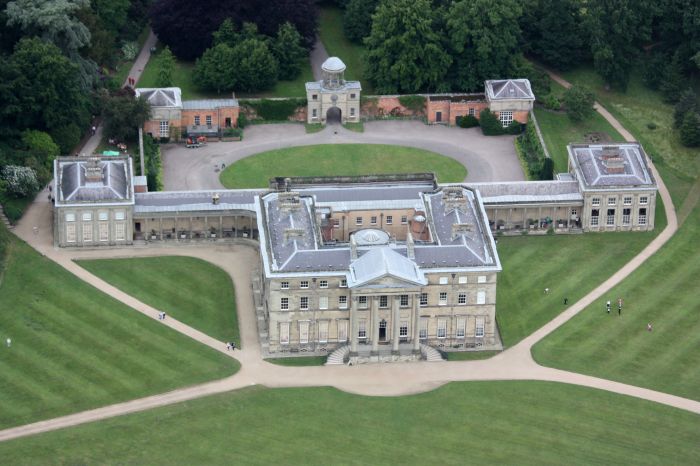
Attingham Park is not merely a historical landmark but a vibrant cultural hub that hosts a diverse array of events, exhibitions, and educational programs. Its commitment to preserving and showcasing art, history, and heritage makes it a cherished destination for visitors seeking inspiration and enrichment.
FAQ Resource
What are the admission fees for Attingham Park?
Admission fees vary depending on the time of year and type of visit. Please check the official website for current pricing.
Are there guided tours available?
Yes, guided tours are available at specific times throughout the day. Advance booking is recommended.
Is there a restaurant on-site?
Yes, there is a restaurant located within the park that offers a range of refreshments and meals.